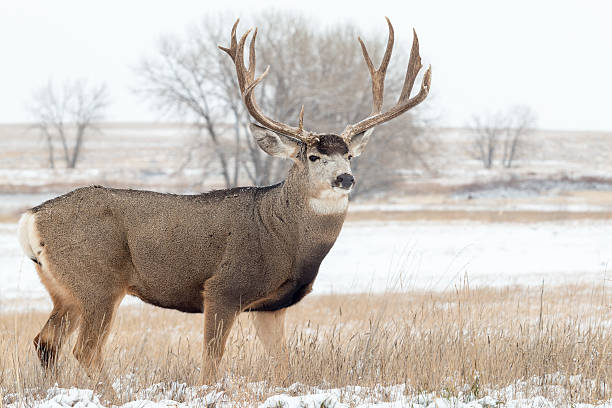Advertisement
Having hunted monster mule deer for more than half of his 31 years, Cody Robbins certainly knows where to find trophy animals. Just this past September, in fact, he arrowed what could well be the new Pope and Young world-record non-typical mulie. At press time, the Delisle, Saskatchewan, hunter was still waiting the required 60 days for the rack to dry before it can be officially scored. Word has it, though, that he may eclipse the current record of 2747/8 inches by some 20 inches. This is just the latest accolade for the professional guide and host of Live 2 Hunt, which won Wild TV’s Grizzly Award for Best Overall Canadian Show this past summer. If you’re on the hunt for a trophy mule, you’d do well to follow his tips.
1. Research
“I spend as much time as I can studying where they live and when they move,” Robbins says, adding it’s best to do your homework before the season even starts. “Thinking back to my top five biggest bucks, I first spotted them in the summer months when they weren’t pressured.” Figuring out a buck’s behaviour is a lot tougher later in the season when the days are shorter, he says, and the deer turn more nocturnal as opening day approaches.
Advertisement
2. Follow
In mountainous areas, mule deer migrate from summer ranges to wintering grounds as the seasons change. When hunting mulies late in the season, look for them closer to their winter range, Robbins says. In the Prairies, mule deer will winter in the same area they inhabit the rest of the year, so Robbins concentrates on finding good food sources to find the deer.
3. Scout
Robbins says his most important tool is a good spotting scope, in his case the Vortex Razor HD. He simply gets up on a high vantage point in suitable habitat and starts scanning. “To find a trophy, I just put on miles.” That means a lot of driving, hiking and glassing.
4. Plan
Once Robbins finds a king buck, he and his hunting partners put together a game plan. “One rule I live by when planning a stalk on a trophy buck is to be patient,” he says. “If the deer is in a sketchy spot, don’t rush it.” Instead, wait for the buck to put himself in a more approachable location. “When the time is right and everything is perfect, make your move.” Robbins also never “skylines” himself on a stalk. “I stay as low as I possibly can at all times.”
Advertisement
5. Wait
Late in the season, mule deer are drawn to habitat that offers easy browsing, Robbins says. If he finds a good source of food, such as sagebrush or second-growth alfalfa crops, along with abundant sign, he will invest a lot of time in the area, and build a blind between the food source and the bedding area. Says Robbins: “This can turn into a perfect ambush.”

